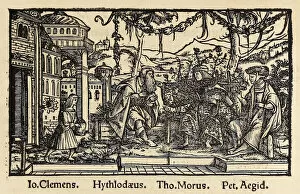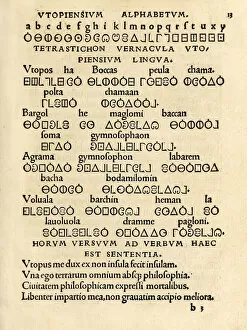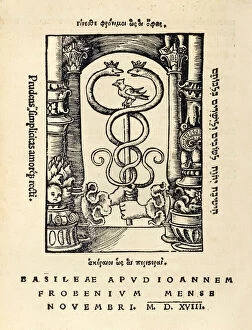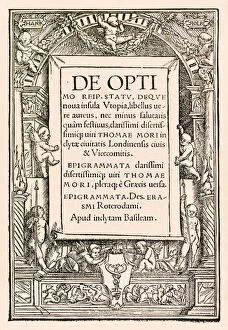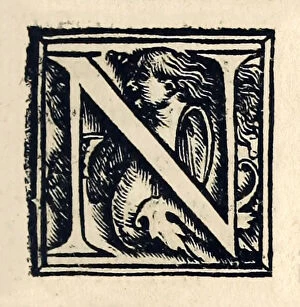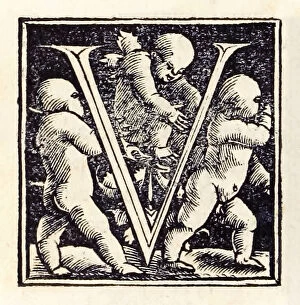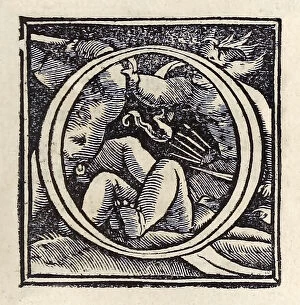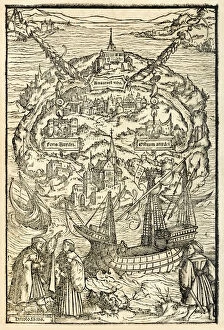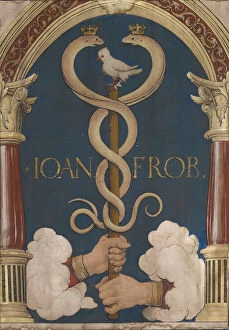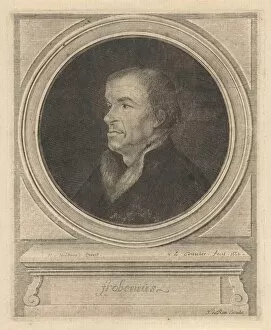Johann Froben Collection
Johann Froben: A Renaissance Scholar and Printer Extraordinaire Johann Froben, a German scholar and printer
For sale as Licensed Images
Choose your image, Select your licence and Download the media
Johann Froben: A Renaissance Scholar and Printer Extraordinaire Johann Froben, a German scholar and printer, left an indelible mark on the world of literature during the Renaissance. His contributions to the printing industry revolutionized book production and dissemination of knowledge. In 1518, Froben published the third edition of Sir Thomas More's Utopia, a groundbreaking work that challenged societal norms. The woodcut from this edition showcased intricate details, capturing the essence of More's utopian vision. Froben's printers mark depicted two hands holding each other firmly—a symbol of unity and collaboration. This emblem reflected his commitment to excellence in craftsmanship and his dedication to fostering intellectual exchange through printed materials. The title page from the same 1518 Basel edition displayed elegant typography, showcasing Froben's meticulous attention to detail. Illuminated letters "N, " "V, " and "O" adorned subsequent pages with their vibrant colors, adding visual appeal to Utopia's text. One particularly notable feature was the map of the New Island of Utopia included in this edition. It provided readers with a visual representation of More's imaginary land—a testament to Froben's innovative approach in enhancing readers' understanding through illustrations. Beyond his printing endeavors, Johann Froben himself became an iconic figure captured by artists throughout history. Lambert Visscher immortalized him in a portrait dating back to 1658-1693—an image that preserves his scholarly presence for generations to come. Froben’s legacy endures as he continues inspiring scholars and printers alike with his unwavering commitment to disseminating knowledge through beautifully crafted books. His impact on literature remains imprinted not only within Utopia but also within every page he ever printed—each one bearing witness to his profound influence on human progress.

